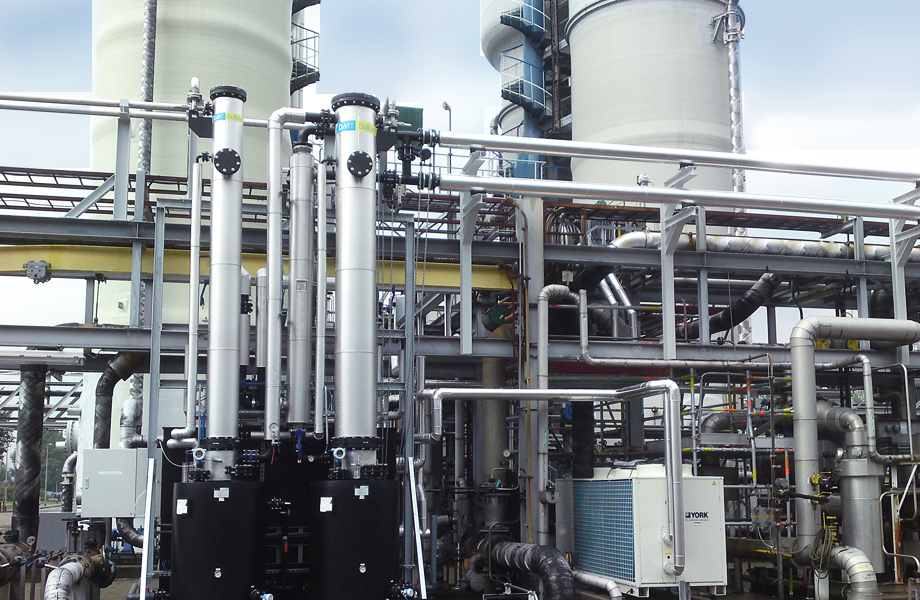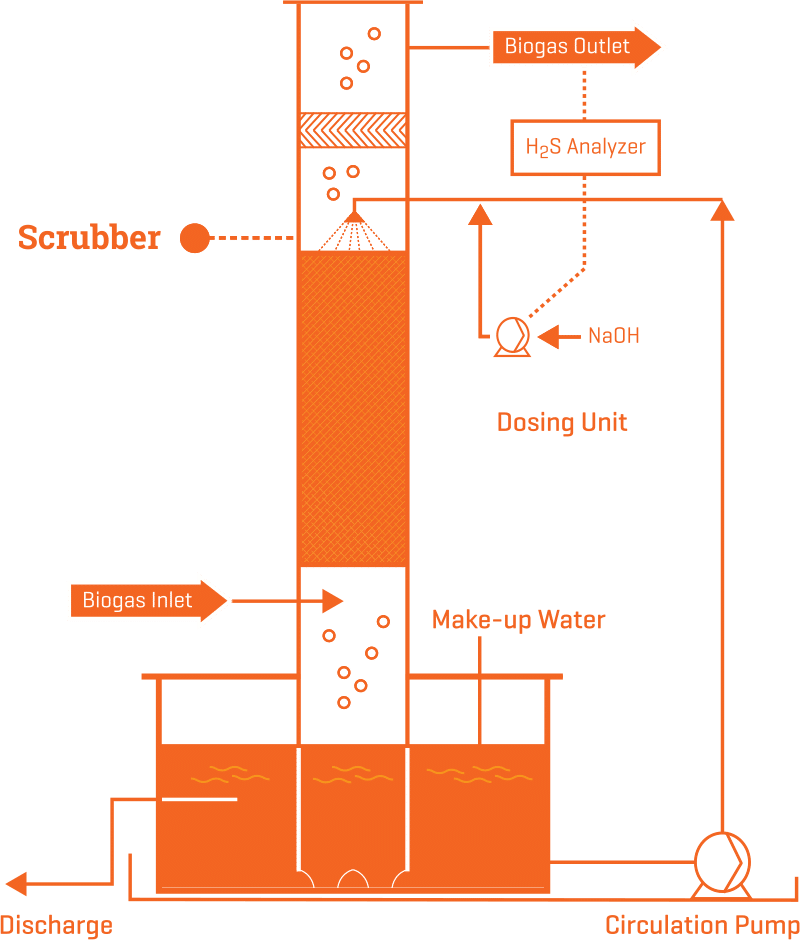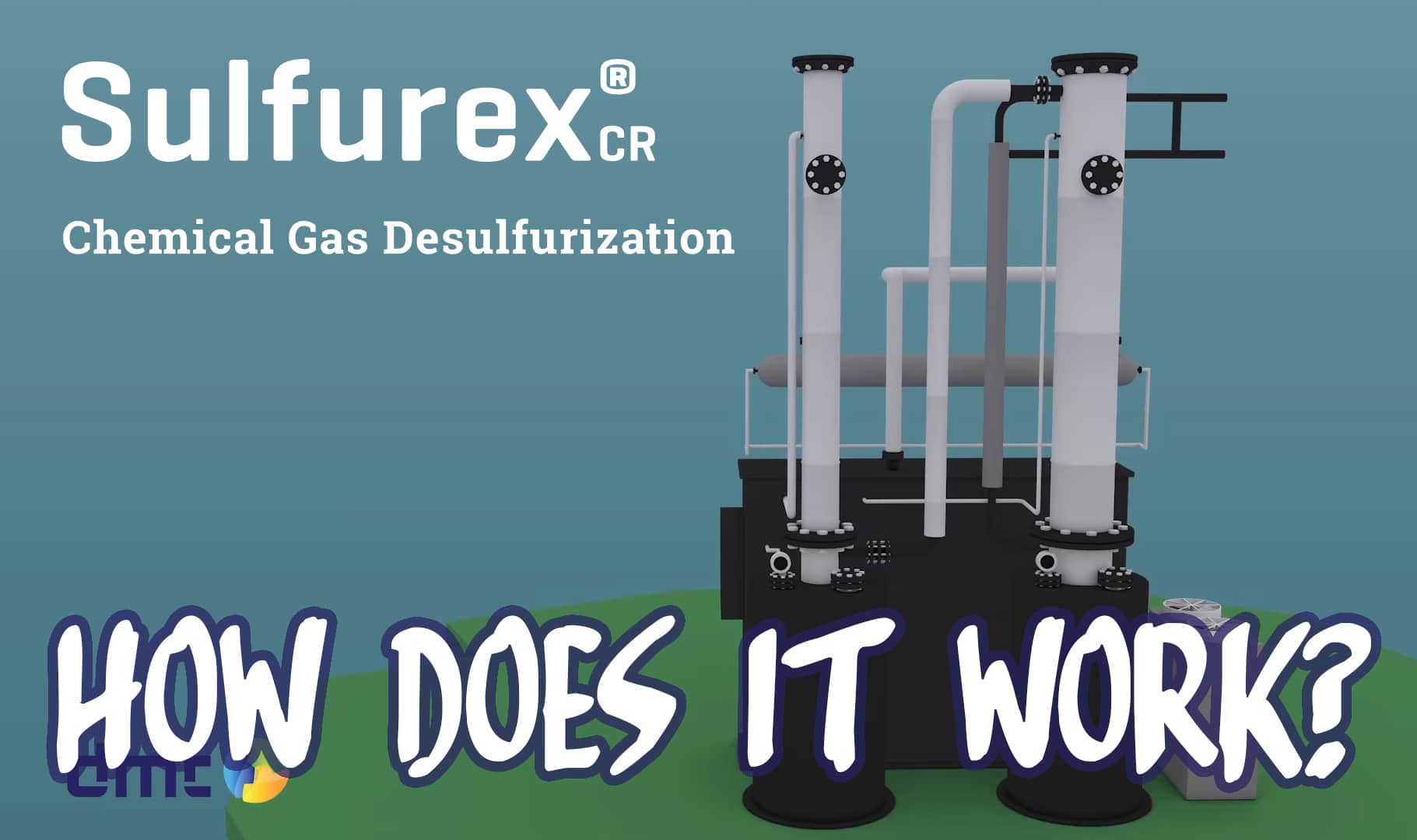Sulfurex® CR
Chemical Reaction
Choose the Sulfurex® CR.
Achieve up to 99% of H₂S removal efficiency for a H₂S load of up to 20,000 ppm using our Chemical Reaction (CR) technology. This compact unit offers selective desulfurization, reacts quickly to inlet gas fluctuations and gives full control over the caustic input. Its easy O&M make the CR a reliable system.
- Integrated Gas Drying and Cooling.
- Flow and Concentration Flexibility.
- Minimal Caustic Consumption.
H₂S Removal Using Caustic Scrubbing Technology
Using caustic scrubbing technology for H₂S removal is widely used due to its inexpensive build, simple operation and ability to handle a wide range of fluctuations in H₂S concentrations and gas flow rates. However, there are many factors to consider when determining which caustic scrubbing design is most appropriate, such as the total quantity of H₂S removed, how the spent caustic will be disposed of or the cost of caustic soda. This is where DMT can help.

How does the Sulfurex® CR work?
DMT’s caustic scrubbing technology, the Sulfurex® CR, is designed to offer control strategies that result in an economic and viable solution for H2S removal. The Sulfurex® CR operates as a counter-current scrubber where raw biogas containing H2S interacts with a caustic solution (NaOH) in a crossflow manner over packing media in the scrubber tower. This desulfurization technique ensures maximum contact between the incoming biogas and caustic solution, thereby, providing high-efficient H2S removal.

Chemical Desulfurization
In the scrubber, both CO2 and H2S are absorbed by the caustic solution and the H2S is converted into sodium hydrosulfide (NaHS). Because CO2 absorption will increase caustic usage, contaminate the NaHS production solution with carbonate salts, and cause potential plugging and fouling of process equipment with carbonate salt solids, DMT’s caustic scrubbers are designed to leave the majority of CO2 in the biogas stream. Our selective scrubbers remove the H2S while slipping most of the CO2.
Smart Dosing System (SDS) and Selective Desulfurization (SD)
For caustic scrubbers, one of the most important issues throughout its operation is how the addition of fresh caustic to the system is controlled. Our Sulfurex® CR harnesses a Smart Dosing System (SDS), to counteract the risk of high consumables and to keep operating expenses (OPEX) low. To dose the right amount of caustic requires knowing exactly how much H2S is in the biogas. The ‘Smart’ in SDS means intelligently controlling the amount of chemicals being dosed in response to real-time information on H2S loading in the raw biogas entering the plant. With the Sulfurex® CR, only the amount of caustic needed at any point in time is dosed, keeping OPEX under control. The Smart Dosing System (SDS) is for the RNG customer who no longer wants to constantly worry about whether they are dosing caustic correctly, or to decide dosing constantly for peak events versus for average loadings (e.g., having off spec gas during peak events).
Additionally, the Sulfurex® CR is designed to offer Selective Desulfurization (SD). SD allows full control of the H2S outlet values, chemical concentrations, pH values, temperature, gas flow and pressure at which sulfur is removed from the gas.
By controlling both the chemical and physical processes, up to 99% of H2S can be removed using DMT’s caustic scrubbing technology.
Integrated Cooling and Drying
Because the absorption of H2S is more efficient at low temperatures, the system runs the biogas through a heat exchanger before it enters the scrubber to reduce the temperature, thereby reducing caustic consumption. Additionally, this heat exchanger also acts as a dryer for the outlet stream, reducing an extra step.
DMT’s Sulfurex® CR combines desulfurization with gas cooling and drying through the integrated dehydration system. Cooling the gas also increases the selectivity for H2S over CO2. In addition, dried biogas prevents condensation and mechanical problems in CHP engines.
Benefits of a Second Scrubber
A second scrubber can be added to minimize the use of caustic soda. Fresh caustic is fed to the second scrubber and the spent caustic solution is fed to the first scrubber. Thus, the second scrubber can be operated at a higher pH than the first scrubber, resulting in removing the bulk of the H2S.

